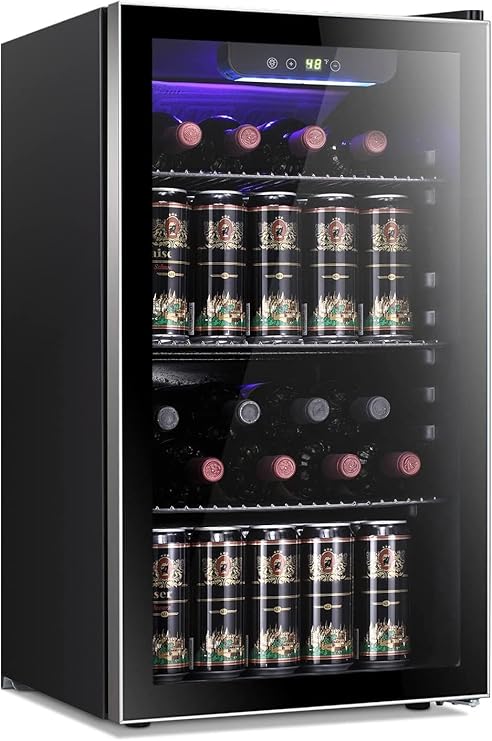Essential Wine Storage Tips: Preserve Your Collection's Quality
Proper wine storage is essential for preserving wine quality and allowing bottles to age gracefully. Whether you're storing wine for immediate consumption or long-term aging, following these fundamental principles ensures optimal preservation and flavor development.
Understanding Wine Storage Fundamentals
Wine is a living product that continues to evolve even after bottling. The storage environment directly impacts how wine ages, develops complexity, and maintains its intended characteristics. Proper storage conditions can enhance wine quality, while poor conditions can cause premature aging, oxidation, or flavor deterioration.
Critical Storage Factors
Temperature Control
Temperature is the most critical factor in wine storage. Consistent temperature prevents wine from expanding and contracting, which can damage corks and allow air infiltration.
- Ideal Temperature: 55°F (13°C) is optimal for most wines
- Acceptable Range: 45-65°F (7-18°C) for most wine types
- Consistency: Avoid temperature fluctuations greater than 5°F
- Red Wines: Slightly warmer (60-65°F) for optimal aging
- White Wines: Cooler temperatures (45-55°F) preserve freshness

Professional Wine Storage Solution
The Antarctic Star Wine Cooler provides precise temperature control and optimal storage conditions for your wine collection. Features include quiet operation, clear glass doors, and professional-grade cooling technology.
View on AmazonHumidity Management
Proper humidity levels prevent corks from drying out and shrinking, which can lead to oxidation and spoilage.
- Optimal Humidity: 50-70% relative humidity
- Too Dry: Corks shrink, allowing air infiltration
- Too Humid: Promotes mold growth and label damage
- Monitoring: Use hygrometers to track humidity levels
Light Protection
UV light exposure can cause wine to develop off-flavors and aromas, particularly in white wines and sparkling wines.
- UV Damage: Causes "light strike" affecting wine flavor
- Storage Location: Dark environments or UV-resistant storage
- Bottle Position: Store bottles away from direct sunlight
- Artificial Light: Minimize exposure to fluorescent lighting
Vibration Reduction
Constant vibration can disturb sediment and accelerate chemical reactions that negatively impact wine quality.
- Sediment Disturbance: Prevents proper aging and clarification
- Chemical Reactions: Accelerates unwanted oxidation
- Storage Location: Avoid areas near appliances or heavy foot traffic
- Wine Coolers: Choose models with vibration reduction technology
Wine Positioning and Orientation
Bottle Position
Proper bottle positioning ensures cork moisture and prevents sediment disturbance.
- Corked Bottles: Store horizontally to keep corks moist
- Screw Cap Bottles: Can be stored vertically
- Sparkling Wines: Store upright to prevent pressure buildup
- Older Wines: Maintain horizontal position for sediment settling
Storage Systems
Choose storage systems that accommodate your collection size and space requirements.

Wine Racks
Organize your collection with elegant wine racks that provide proper bottle positioning and easy access.

Wine Bar Cabinets
Complete storage solutions with wine bar cabinets that combine storage and display functionality.
Storage Location Considerations
Home Storage Options
- Wine Cellars: Ideal for large collections and long-term aging
- Wine Coolers: Perfect for temperature-controlled storage in any room
- Basements: Natural cool, dark environments with stable temperatures
- Closets: Interior spaces away from exterior walls and temperature fluctuations
What to Avoid
- Kitchen Storage: Temperature fluctuations from cooking and appliances
- Garage Storage: Extreme temperature variations and chemical exposure
- Attic Storage: Excessive heat and temperature fluctuations
- Near Heat Sources: Radiators, ovens, and direct sunlight
Monitoring and Maintenance
Regular Monitoring
Consistent monitoring ensures your storage conditions remain optimal.
- Temperature Checks: Daily monitoring with digital thermometers
- Humidity Monitoring: Weekly hygrometer readings
- Visual Inspection: Monthly checks for cork condition and label integrity
- Equipment Maintenance: Regular cleaning and filter replacement
Storage Equipment Care
Proper maintenance extends equipment life and ensures consistent performance.
- Wine Cooler Cleaning: Monthly interior cleaning with mild detergent
- Filter Replacement: Quarterly air filter changes
- Seal Inspection: Check door seals for proper closure
- Condenser Cleaning: Annual professional maintenance
Special Considerations for Different Wine Types
Red Wines
Red wines generally benefit from slightly warmer storage temperatures and longer aging periods.
- Storage Temperature: 60-65°F (15-18°C)
- Aging Potential: Most reds benefit from 2-10 years of aging
- Position: Horizontal storage to maintain cork moisture
White Wines
White wines require cooler storage temperatures to preserve freshness and acidity.
- Storage Temperature: 45-55°F (7-13°C)
- Aging Potential: Most whites are best consumed within 2-5 years
- Position: Horizontal storage for cork-sealed bottles
Sparkling Wines
Sparkling wines require special handling to maintain carbonation and prevent pressure buildup.
- Storage Temperature: 45-50°F (7-10°C)
- Position: Upright storage to prevent pressure issues
- Handling: Minimize movement and vibration
Common Storage Mistakes to Avoid
Avoid these common storage errors that can damage your wine collection:
- Storing wine in regular refrigerators (too cold and dry)
- Exposing bottles to direct sunlight or UV light
- Storing wine in areas with temperature fluctuations
- Storing corked bottles upright for extended periods
- Ignoring humidity levels and cork condition
- Storing wine near strong odors or chemicals
Building Your Wine Storage System
Creating an effective wine storage system requires planning and consideration of your specific needs:
- Assess Your Collection: Determine current size and growth potential
- Choose Storage Type: Select appropriate storage solution for your space
- Install Monitoring: Set up temperature and humidity monitoring
- Organize System: Implement organization and inventory tracking
- Maintain Regularly: Establish routine maintenance schedule
Conclusion
Proper wine storage is an investment in your collection's future. By following these essential storage tips and using quality storage solutions like the Antarctic Star Wine Cooler, you can ensure your wines age gracefully and maintain their intended characteristics.
Remember, wine storage is both an art and a science. Consistent conditions, proper positioning, and regular monitoring will help you create the perfect environment for your wine collection to thrive.
Ready to Upgrade Your Wine Storage?
Explore our complete collection of wine storage solutions and accessories.
View All Products
